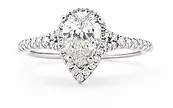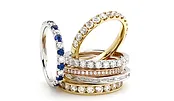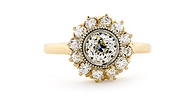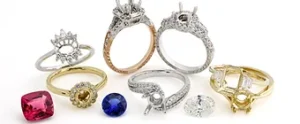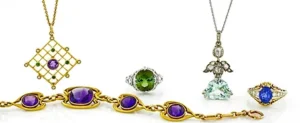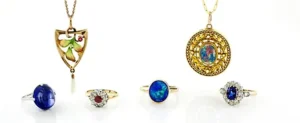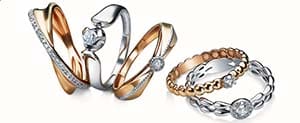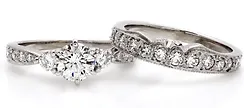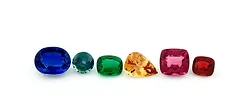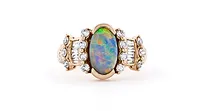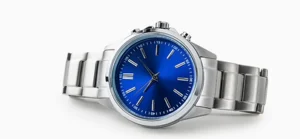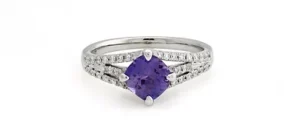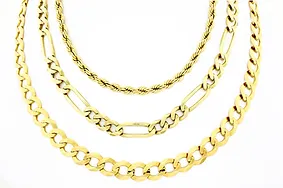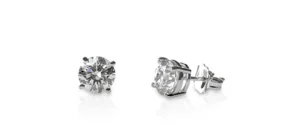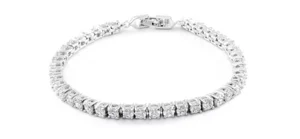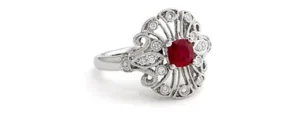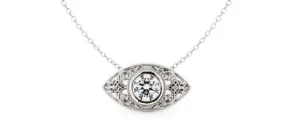Ruby Gemstone • Facts about the elusive natural Ruby
Ruby Gemstone: A fine, gem-quality Ruby is second to none in the gemstone world. Rubies are, along with Sapphire, the most durable colored gemstone for ring use, and have been passed down through generations. They combine the inner glow of an Emerald, the rarity of a fine diamond (or more) and possess the rarest color in the gem world: pure red. Thus they are the most treasured of the natural colored gemstones, and the July birthstone, and a global symbol of passion.
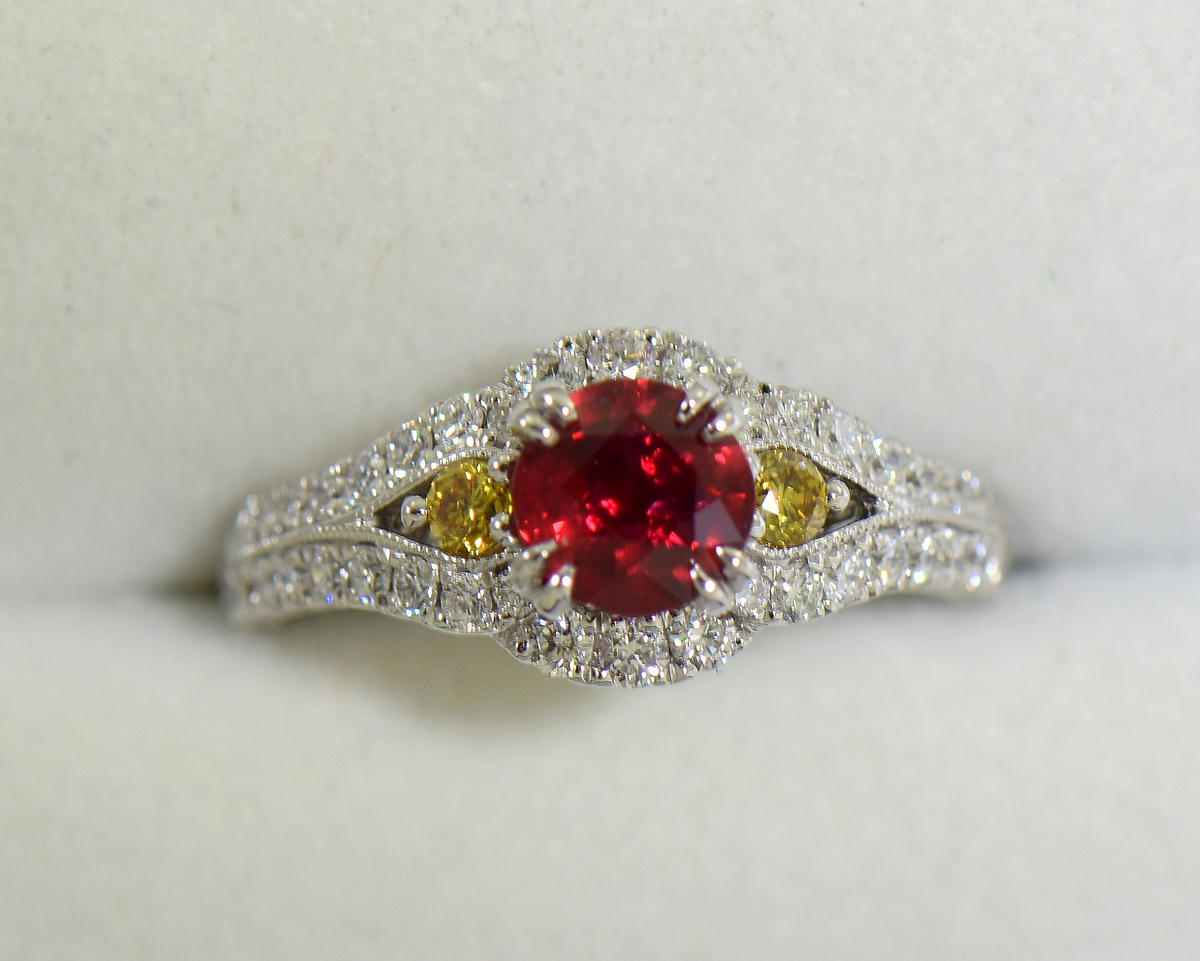
1.00ct unheated Burmese Ruby (GIA) set in white & yellow diamond accented ring mounting
Ruby Meaning: The ruby has more of a spiritual meaning to most people. In the US, its red color makes the Ruby a perfect gift for a loved one or on occasions such as Valentine’s Day or an anniversary. In China, where red is the good luck color, Rubies are a good luck gemstone. In India, it is believed that the Ruby stone has the power to align and lend energy to the body. The ruby is also believed to protect the wearer from negative forces that leach positive energy, promoting spiritual vitality and wellness overall. In European lore, the Ruby was given as a gift to show love, passion, and success.
Elusive Ruby: As you can see, Rubies are coveted by cultures and people around the world. Yet scarcity of fine natural Rubies cannot be overstated. In the US rubies are the July birthstone and considered one of the three precious gems, thus demand is high. In Europe rubies are associated with royalty and command a premium. In Asia – especially China – a ruby has become a symbol of wealth. Thus the entire globe is in competition for a tiny supply of elusive rubies.
What makes a Ruby top quality? The key factor is color. The ideal color for a Ruby is 95% red, with just a hint of blue or purple- what connoisseurs call “pigeon’s blood red.” The best shade is medium dark, so that the color is rich and intense, without looking too dark or pink. Really, any Ruby that screams RED is going to be valuable. Secondarily the gem must be clean to the eye. Almost all rubies contain flaws and imperfections due to the geological conditions when they form. Thus a flawless Ruby is almost unheard of, but we aim for rubies that are eye-clean and whose imperfections do not detract from the life of the stone. Thirdly, a good ruby must have a good cut. Most rubies are cut at the mine where they aim to preserve weight and size. This frequently results in a windowed, deep or shallow, off shape stone. So a ruby cut with precision is a welcome rarity. Lastly, the best Rubies come out of the ground as they are, and are untreated Ruby, and buyers pay a premium for totally natural Rubies. Most Rubies are heat treated, to remove silk inclusions, and this is an acceptable treatment and we always disclose this to buyers, and items are accompanied with lab paperwork when the ruby is over $2500.
The scarcity of fine Rubies cannot be overstated. Historically the finest Rubies were mined in Burma (now Myanmar) but these sources are drying up. A key mine near Mogok flooded and collapsed several years ago, and the other mines have not been producing in the quantity that they used to. Concurrently, the US has placed a trade embargo on any goods originating in Myanmar due to political reasons, and these Burmese rubies are now illegal to import. Fortunately some East African countries have started producing limited numbers of gem quality rubies, but the mining is sporadic. The best African Ruby so far has been from Madagascar and Mozambique, though we aren’t picky- we love any beautiful red Ruby, no matter its origin.

A pair of round heated Burmese rubies flanking a 1.1ct unheated Madagascar Ruby.
Unfortunately, as Rubies get Rarer, more treated stones and fakes enter the market. We advise our clients to only buy Natural Rubies (or lab created if its their preference), and to prioritize untreated or heat only gems, and to get the details in writing with lab documents (from the GIA or comparable lab) to back up the specifications of the gem. Many of the Rubies we see offered, especially those over 2ct, are “glass filled” or “heated with residue” which is a nonpermanent and not trusted practice, and should be avoided.
We have been fortunate to find some amazing deals on rubies in the last few years. One of our favorite dealers works in selling the collections of retiring dealers and jewelers, giving us access to material that is “old stock.” We also buy as much antique jewelry with Rubies as we can, as many antique ruby rings are set with higher quality and untreated gems that are impossible to replace on the market today. Good quality 1ct heated rubies can still be found for $1500-3000, but fine quality will be $5,000-10,000, and untreated Burmese can be double, and more in large sizes. The time to buy a Ruby is when you see one you like and can afford!
Interested to learn more about the Elusive Ruby? Contact us today to see how we can help you. We have a great selection of loose natural Rubies, other natural red gemstones, and Ruby jewelry in stock for your browsing pleasure.

